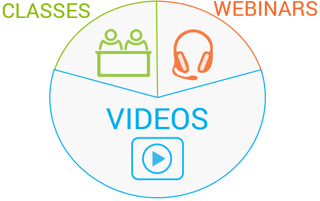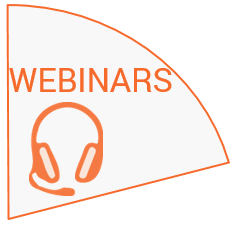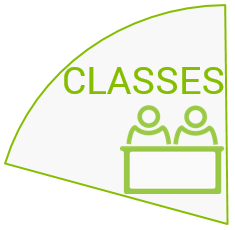 Update 3/19/2020:
Update 3/19/2020:
If you are here due to the COVID-19 pandemic, you've come to the right place. We have years of experience delivering training in remote modalities. Read on.
We are seeing a spike in requests for Microsoft Teams training because of the increasing need to work from home. We can train your organization FAST, and 100% online.
Original Post
KnowledgeWave is all about the Blended Learning Experience, and as such providing live instructor-led training options is a key component to our learning mix. The KnowledgeWave Learning Site has introduced new clients, from all over North America (and across the seas) to our service offering. With a bigger footprint, we have more students than ever attending our live classes remotely.
All of our corporate training plans provide blended options for training that include on-demand video, instructor-led webinars, and live instructor-led hands-on remote classes in order to reach all different learning styles.
So, what does remote training mean? It can mean different things to different people and companies. However, I think most would agree that "remote" means that the students and instructor are not physically in the same classroom.
Related Blog Post: How to Be an Effective Employee While Working from Home
Remote training types can vary
Live Instructor-Led Webinars
 Our webinars are run live, and we also record them. As a live event they provide an engaging opportunity for both the instructor and attendees. During our webinars, we are presenting, demonstrating and showcasing features and processes of various software. Attendees can ask questions related to the topic and the instructor can answer in a live format. Instructors can poll students and receive immediate feedback and direct the training based on that feedback. Webinars can be delivered to large groups, like our monthly member events, or in a small private group session (we offer this benefit for all our clients). Webinars are usually very targeted and task-based with the goal to provide a productivity boost on a particular topic. Think PivotTables, not all of Excel. Or Microsoft Teams and how to run meetings. Recommended duration is 30-60 minutes and attendees do more watching than doing, but they can attend from anywhere on most any type of device.
Our webinars are run live, and we also record them. As a live event they provide an engaging opportunity for both the instructor and attendees. During our webinars, we are presenting, demonstrating and showcasing features and processes of various software. Attendees can ask questions related to the topic and the instructor can answer in a live format. Instructors can poll students and receive immediate feedback and direct the training based on that feedback. Webinars can be delivered to large groups, like our monthly member events, or in a small private group session (we offer this benefit for all our clients). Webinars are usually very targeted and task-based with the goal to provide a productivity boost on a particular topic. Think PivotTables, not all of Excel. Or Microsoft Teams and how to run meetings. Recommended duration is 30-60 minutes and attendees do more watching than doing, but they can attend from anywhere on most any type of device.
Read more: The 7 Most Important Benefits of Blended Learning
How Do Webinars Work?
Attendees typically register for a webinar using an online form. Then they will receive an email containing a link to the webinar. At the appointed time, attendees click the link and enter the webinar using their computer. The audio is typically delivered through the computer’s speakers or headphones while they watch the instructor’s demonstration live on their screen.
The most common way for webinar attendees to submit questions and feedback is through a chat feature in the webinar software.
Live Remote Instructor-Led Classes
 KnowledgeWave’s classes can be attended remotely. Classes are typically more in-depth, and provide a broader scope in content and are delivered in longer sessions. Beginner, intermediate and advanced content topics are usually offered. Our remote classes are designed to provide synchronous real-time experience for the remote student. Students attending classes remotely see the instructor's presentation and then students have an opportunity for hands-on practice. Our instructors can see the student’s screens to offer guidance and can even assist a remote student that may be having difficulties. A typical training class is anywhere from 1-6 hours long, with a limited number of seats.
KnowledgeWave’s classes can be attended remotely. Classes are typically more in-depth, and provide a broader scope in content and are delivered in longer sessions. Beginner, intermediate and advanced content topics are usually offered. Our remote classes are designed to provide synchronous real-time experience for the remote student. Students attending classes remotely see the instructor's presentation and then students have an opportunity for hands-on practice. Our instructors can see the student’s screens to offer guidance and can even assist a remote student that may be having difficulties. A typical training class is anywhere from 1-6 hours long, with a limited number of seats.
How Do Remote Classes Work?
When you register for a class, please specify that you wish to take it remotely. Then we will send you the book for the class via email and a link to join the remote training session. On the day of class, click the link and join the online training session using your computer. You will be able to hear the instructor through your computer’s speakers while you watch the live video of the class. At various times, you will be able to see the instructor and you will be able to see the instructor’s screen. You will need a microphone attached to your computer so that you can speak to the instructor and the rest of the class, too. When it’s time for hands-on practice, the instructor will connect you to a remote lab computer that is all setup and ready for you. It has the correct software and files all ready to go so that you can do the practice exercises.
Learn more: Optimize Your Microsoft Teams Training with KnowledgeWave
Want to experience remote training first hand?
FREE WEBINAR: How to Be An Effective Employee While Working From Home
Webinar Description: Learn best practices for being productive and professional when working from home. We’ll explore strategies for managing your physical space, your digital assets, your mindset, and your work relationships when working from home. We will also give some examples of using modern remote workplace tools that are readily available as part of Office 365.
CLICK HERE to view available dates and times for this webinar and to register to attend!






